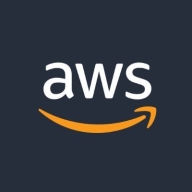

Ubuntu Linux and Amazon FreeRTOS compete in the domain of operating systems. Ubuntu excels in general-purpose computing, while Amazon FreeRTOS is specialized for IoT applications. Ubuntu holds an advantage in general computing contexts due to its flexibility in pricing and support, whereas Amazon FreeRTOS offers significant value with its specialized IoT features.
Features: Ubuntu Linux features a robust package management system, versatile customization options, and broad application compatibility. It is preferred for its extensive application library. Amazon FreeRTOS offers seamless cloud integration, a lightweight architecture, and real-time capabilities crucial for IoT implementations, making it advantageous for IoT-specific tasks.
Ease of Deployment and Customer Service: Ubuntu Linux offers straightforward installation processes supported by extensive documentation and community support, beneficial for general computing. Amazon FreeRTOS provides pre-configured libraries and native AWS integration, simplifying IoT project setups, complemented by dedicated AWS technical support, enhancing its value in IoT sectors.
Pricing and ROI: Ubuntu Linux, being open-source, allows for minimal initial setup costs with potential savings over time in general computing. Amazon FreeRTOS offers free usage for basic operations, incurring additional costs through AWS services. Ubuntu offers high ROI due to reduced software expenses, while Amazon FreeRTOS may deliver better ROI for IoT projects by improving device connectivity and management efficiency.
| Product | Market Share (%) |
|---|---|
| Amazon FreeRTOS | 24.0% |
| Zephyr | 30.4% |
| QNX Neutrino | 21.8% |
| Other | 23.799999999999997% |
| Product | Market Share (%) |
|---|---|
| Ubuntu Linux | 10.8% |
| Rocky Linux | 13.6% |
| Windows Server | 10.0% |
| Other | 65.6% |

| Company Size | Count |
|---|---|
| Small Business | 84 |
| Midsize Enterprise | 21 |
| Large Enterprise | 52 |
Amazon FreeRTOS (a:FreeRTOS) is an open source operating system for microcontrollers that makes small, low-power edge devices easy to program, deploy, secure, connect, and manage. Amazon FreeRTOS extends the FreeRTOS kernel, a popular open source operating system for microcontrollers, with software libraries that make it easy to securely connect your small, low-power devices to AWS cloud services like AWS IoT Core or to more powerful edge devices running AWS IoT Greengrass.
A microcontroller (MCU) is a single chip containing a simple processor that can be found in many devices, including appliances, sensors, fitness trackers, industrial automation, and automobiles. Many of these small devices could benefit from connecting to the cloud or locally to other devices. For example, smart electricity meters need to connect to the cloud to report on usage, and building security systems need to communicate locally so that a door will unlock when you badge in. Microcontrollers have limited compute power and memory capacity and typically perform simple, functional tasks. Microcontrollers frequently run operating systems that do not have built-in functionality to connect to local networks or the cloud, making IoT applications a challenge. Amazon FreeRTOS helps solve this problem by providing both the core operating system (to run the edge device) as well as software libraries that make it easy to securely connect to the cloud (or other edge devices) so you can collect data from them for IoT applications and take action.
Ubuntu Linux is an open-source platform known for its robust security, ease of use, and rapid performance. Its lightweight design and comprehensive support system make it ideal for diverse IT environments, providing seamless management and scalability options.
Ubuntu Linux stands out with its open-source nature that allows extensive customization and access to a broad range of free software. It is widely praised for its stability and a vast package repository offering regular updates, enhancing its usefulness across different sectors. The platform is equipped with a lightweight design and excellent community support, making it scalable and easy to manage. While it could improve in areas like Windows software compatibility and user interface refinement, its benefits in enterprise management and development projects are undeniable. Improved documentation, better hardware integration, and enhanced third-party application compatibility are additional focal points to consider.
What are the key features of Ubuntu Linux?
What benefits should be considered from reviews?
Ubuntu Linux is prominently implemented in industries for tasks such as server management, application deployment, and software development. Its resource efficiency and open-source tool compatibility make it a favorite for programming, research, and cybersecurity. Companies frequently use it for web hosting, cloud services, and managing multi-user enterprise solutions.
We monitor all IoT Operating Systems (OS) reviews to prevent fraudulent reviews and keep review quality high. We do not post reviews by company employees or direct competitors. We validate each review for authenticity via cross-reference with LinkedIn, and personal follow-up with the reviewer when necessary.